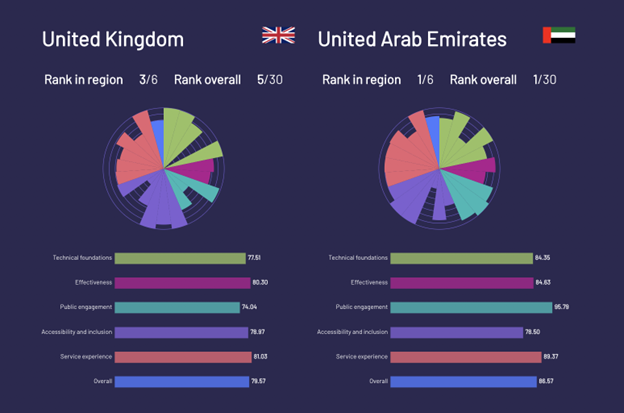Few dispute that the public sector in the UK is facing phenomenal challenges. Pressure on services is growing. Budgets are ever tighter. There are political pressures on the horizon. What is needed is a way to improve the mechanism through which help is delivered.
Design thinking or, more specifically, “human-centred design” helps identify the most effective way of delivering a service. By putting yourself in the shoes of someone you are trying to help, you identify the whole problem that they are trying to solve, map out all the times they need to talk to someone or fill in a form, and spot the places where there are dead ends or mismatches between systems. Improving these things achieves the holy grail in public services: reducing costs while improving quality of service.
The good news is that the UK is fairly well set up to do this. We have recently benchmarked 30 countries on their capacity to harness human-centred design in the delivery of their public services. The UK ranks fifth in our Human-Centred Public Services Index.
The index measures the extent to which services are easy to use, easy to access, reliable and effectively deliver their promised outcomes. We measured this through the combination of an international survey, which asked just under 10,000 people worldwide what they thought of public services, existing data from organisations such as the World Bank and the United Nations, and research into the quality of information on each country’s public service webpages.
The UK’s score in the index reflects progress that has been made to date. This has largely been in digital transformation, building on reforms led by the Government Digital Service. However more mainstream parts of policy delivery, such as changes to support for farming led by Janet Hughes at the Department for Environment, Food and Rural Affairs, are also gaining momentum.
There is a professional cadre of policy designers in the UK government corralled by Andrew Knight in the Cabinet Office. Most departments now have a dedicated in-house design team. We have so many of the building blocks to really start harvesting the benefits.
Quite how to do that can be seen from looking at the performance of other countries in the index. The three leading countries, the United Arab Emirates, Finland and Singapore, have each taken different approaches but what unites them is a clear, consistent, vision for the future implemented over the long term.

If you look at the story behind the numbers then there are some really strong messages for governments in how to overhaul our public services to be fit for the 21st century.
Countries that perform best have a strong vision for public service design. Setting out this vision from the centre of government, through standards, strategy and funding for design teams is crucial for any government to excel in designing services which work well for their users.
Countries also need to have a way to track performance in delivery and public experience across their whole portfolio of services, to inform their priorities and promote cross-departmental interest in creating services that meet people’s needs.
In addition to benchmarking, governments need to establish clear accountability for transformation in departments with agreed priorities for the year. This should be accompanied by clearly outlined actions, timelines and allocated responsibilities.
Public services should also be designed for and with the people who need them the most. Service teams should prioritise reaching out to people from marginalised communities to understand their needs and centre them in the design process. Co-design practices – whereby people with different lived experiences are brought into teams to help design the services themselves – can help governments to meaningfully engage with users to create inclusive and accessible services.
Finally, governments need to keep pace with innovation in the private sector and, where appropriate, work to harness the best technology to deliver service improvements.
This will be challenging in the current environment, but the way our services are currently delivered was not decreed by holy writ. We can and should improve them. It won’t happen overnight, change takes time, but like the Chinese proverb says: “The best time to plant a tree was 20 years ago. The second-best time is now.” We cannot afford to sit on our hands and watch the erosion of our public services.
Richard Stirling is the co-founder and CEO of Oxford Insights. Jasmine Kendall is a consultant at Oxford Insights